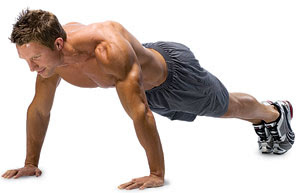
While fitness fads may come and go as fast as their late-night infomercials, some types of exercise transcend trends. Among them is the push-up, which uses your own body weight along with gravity to tone and condition muscles. Some fitness experts have called the push-up the closest thing there is to a perfect exercise. And with good reason.
"One of the reasons the push-up has endured so long is it's cheap, it's easy, it doesn't require any equipment, it can work multiple parts of the body at the same time -- and pretty much everyone, from beginners to athletes, can derive benefits," says personal trainer Jonathan Ross, a spokesman for the American Council on Exercise (ACE).
What kind of benefits? If you're thinking the push-up is the best upper body exercise, many fitness experts agree. But, personal trainer Jessica Bottesch tells Abfitt, the push-up benefits many muscle groups body-wide.
"The primary movers [the major muscle groups that produce the motion of a push-up] are the chest and tricep. However, if you look at the form your body takes during the perfect push-up, you're typically suspended from your toes all the way to your neck, so in reality, every muscle between your shoulders and your toes is engaged," says Bottesch, co-owner of Empower Personal Training in Durham, N.C.
This includes the all important core muscles of the trunk, as well as the abdominals, legs and hips, she says.
And for women, Bottesch tells Abfitt, the push-up has an extra benefit.
"A push-up is considered a resistance exercise, so in addition to muscle strengthening, you also get bone-building effects. It can be as effective as working out with weights," says Bottesch.
